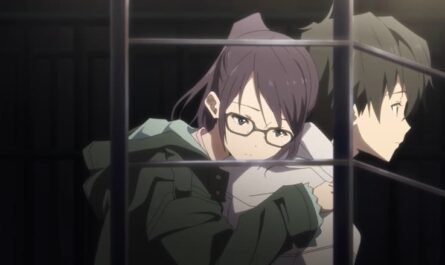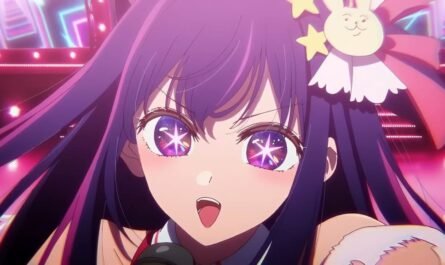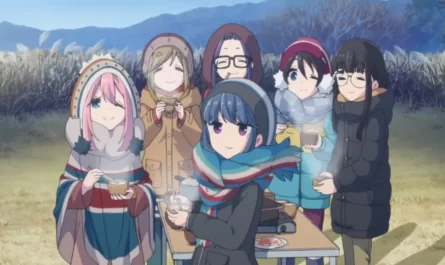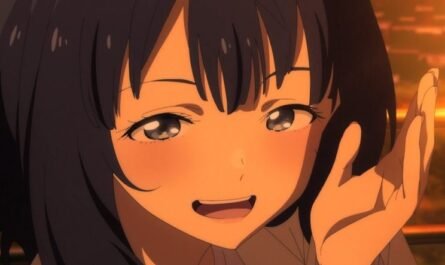Do you remember the first time you went out at night? It doesn’t matter what kind of place it was. At that time, how did you feel about the “night” area, and how did you see the surrounding landscape? This summer, an animation work that uses such “night” as a key is being broadcast. A boy who has never been in love falls in love with a vampire.
Therefore, in this article, I would like to introduce “Yofukashi no Uta” and explain the “night” depicted in the same work.
“Yofukashi no Uta” is where a boy who feels he belongs in the “night” tries to find out about love.
Kou Yamori (voice: Hajime Sato), a second-year junior high school student who was not good at girls and somehow didn’t go to school, one day, after a series of sleepless nights, went out alone at night for the first time and said, “This is where I belong.” I think.
A mysterious girl, Nazuna Saegusa (voiced by Sora Amamiya), called out to Kou when he felt that vending machines at night were dazzling. Nazuna assures Kou that she cannot sleep. “People stay up late because they are not happy with the day,” she said. After this, Kou is invited to Nazuna’s room and learns that she is a vampire and that for a person to become a vampire, she must first fall in love with a vampire and have her blood sucked. Kou makes a decision. He said, “Make me a vampire,” “Make me fall in love.”
A boy who doesn’t know love decides to try to know love, which can be said to be the first step for a boy to become an adult. This is probably because he encountered a foreign object called a vampire. However, if I used the words in the work, I think the part where I felt like I belonged in “a night out of the ordinary” was more important.
The fact that night is out of the ordinary is not because human activity is primarily during the day. The town that is the stage of this work has a wide street in front of the station and several large buildings, and Kou lives in an apartment complex. It would be a place with so many people in the daytime that it could be called a crowd. People disappear from such a place just at night. Kou, who was not good at locations with many people, felt not only a sense of liberation at such a “night” but also a different landscape…a feeling of being lost in another world. Noda.
An animation depicting a “night” outside of everyday life
Looking back, animation has depicted many different nights. However, the first night I felt “out of the ordinary” was the 1972 broadcast of “Justice Lovers Moonlight Mask.” Normally, it’s a normal night sky with bluish stars and sparkling stars, but a moonlight mask appears when a strange incident occurs.
The action begins. The space sometimes turns red, yellow, and white into waves. For example, in 1974’s “Cutie Honey,” when the battle with the enemy Panther Claw began, for some reason, a floodlight appeared, and a colorful line of light similar to the spotlight on the stage was drawn.
In these two works and other works, the psychedelic colors that were popular in the latter half of the 1960s were used to switch to unusual scenes. At the same time, you can also feel the production site’s trial and error in expressing the night from these methods.
How to express “night” within the constraints
The representation of the night in animation changes with the times. An era when colors were not painted digitally. I had to paint the cells with a brush to create the animation. Therefore, the number of colors is not infinite, and to prevent mistakes in a painting by hand. If it is a unique product that needs to be mixed on-site every time it is replenished, color spots will occur, so colors that can be made in advance by a contractor were the standard, and the number of colors was limited for each work.
There is also a problem on the TV receiver side. It is impossible to express the resolution and exact colors that can be seen even if a black object is placed in a black shadow as it is now. That’s why I came up with the color specification for night use. So put, when setting the character’s color, unlike the normal daytime version, create a night-specific color specification that looks like a blue filter.
Of course, the background is drawn with a brush on a large paper like drawing paper instead of a cell, so there are no color restrictions, but for the above reason, the background has to match the character’s limited color, so it’s night. It’s not as simple as just black. For example, the universe of “Space Battleship Yamato” broadcast in 1974 is blue, and later series have a little black part. It can be said that it is an example of searching for the most suitable expression under the conditions of the time.
If you try to depict the darkness of the night properly, you will not be able to see what you want to show. The method of shooting in the daytime and offering it at night in later processing has existed since the days of black and white film, but it is said that the film “NOPE,” which is currently being released, was also shot in a method that developed it.
Instead of showing the lighting, show the illuminated outer wall.
There are some differences other than color. In the past, night views of skyscrapers were generally represented mainly by window and aircraft obstruction lights installed at the top of buildings. However, the outer wall illuminated by the lighting is also visible these days.
A long time ago, there was a time in the news when the lighting method of Tokyo Tower was changed. Instead of showing the lighting, it changed to show the steel frame illuminated by the lighting. There was a time when the night view of factories and viaducts illuminated by brightly colored lights became a hot topic, but if you say that the night view of this work is close to those, you will understand.
The space produced by light is the “place” that the protagonist feels.
To make you feel “out of the ordinary” even more, a “Colorful night view” appears in many scenes of “Yofukashi no Uta.” Neon-like colorful light sources (street lights, etc.) such as orange, purple, green, etc. are arranged, and the same color is put on the buildings illuminated by them. If you look closely, you can see that the same color as the streetlights extends to the range of buildings you can’t reach, and the Milky Way and stars are also painted in similar yellows, blues, and purples. Not only the lights of home windows and streetlights but also the illuminated nightlights and nightscapes are drawn in a gorgeous space produced by light, not a mysterious area covered by darkness. That is the “night” that Yamori Kou feels is where he belongs.
Video works do not simply capture things as they are. The intention extends to the background. Director Akira Kurosawa is famous for saying, “Get rid of that cloud,” but the same reasoning flows in “Justice Lovers Moonlight Mask,” “Cutie Honey,” and, of course, “Yofukashi no Uta.” You can say that there are
A night is expressed by the bluish-white light of fluorescent lights that everyone imagines and a vivid night, like a neon sign. A night with no one and a night with someone. While watching such a night of “Yofukashi no Uta,” how about thinking back on the “night” you felt for the first time?











